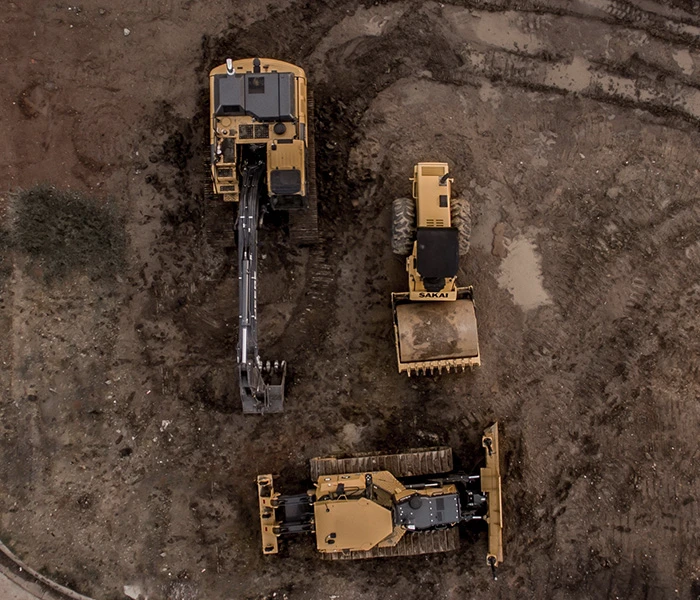
Starting a new business is an exciting venture, but it often comes with financial challenges, particularly when acquiring necessary assets. However, asset finance for new businesses provides a viable solution to overcome this hurdle.
- Can You Get Asset Finance as a New Business?
- Understanding Asset Finance for New Businesses
- Advantages
- Disadvantages
- How Is Asset Finance for New Businesses Different
- Different Types of Asset Finance
- What Assets New Businesses Can Finance
- Conclusion
Can You Get Asset Finance as a New Business?
One common question that arises for new businesses is whether they can access asset finance. The answer is yes, although the process may differ from established companies.
Lenders and leasing companies understand the unique challenges startups face and are often willing to support them in acquiring essential assets. However, it’s important to note that new businesses may need to provide additional information and meet certain criteria to qualify for asset finance.
As a new business seeking asset finance, lenders will typically consider factors such as your business plan, financial projections, personal credit history, industry experience, and the financed assets’ viability.
While a solid track record may not be necessary, demonstrating a clear understanding of your business concept and growth potential is crucial. It’s also beneficial to provide evidence of market demand for your products or services, as this helps lenders assess the revenue-generating capacity of your new business.
Understanding Asset Finance for New Businesses
Asset finance for new businesses refers to financing options allowing startups and new ventures to acquire essential business assets without substantial upfront capital investment. Instead, it provides access to equipment, machinery, vehicles, or other tangible assets necessary for the business to operate and grow. Instead of purchasing assets outright, new businesses can secure financing from lenders or leasing companies, enabling them to use the assets while making regular payments over an agreed-upon term.
✅ Advantages
- Preserves Capital and Improves Cash Flow: Asset finance allows new businesses to conserve capital and maintain healthy cash flow. Instead of making a substantial upfront investment to purchase assets, you can allocate your funds to other critical areas such as marketing, hiring, or research and development.
- Facilitates Business Growth and Expansion: By accessing essential assets through finance, new businesses can accelerate their growth and expansion plans. For example, acquiring necessary equipment, machinery, or vehicles enables startups to meet customer demands, increase production capacity, and scale their operations more efficiently.
- Flexibility in Asset Selection: Asset finance provides flexibility in choosing the assets that best suit your business needs. You can select from a wide range of options, ensuring that the equipment or machinery aligns with your industry requirements and growth objectives. This flexibility allows for customisation and optimisation of your asset portfolio.
- Potential Tax Benefits: Asset finance may offer tax advantages for new businesses depending on the jurisdiction and specific circumstances. For instance, lease payments might be tax-deductible as operating expenses, reducing the overall tax liability. Consult with a tax advisor to understand the potential tax benefits applicable to your business.
❌ Disadvantages
- Interest Costs: Asset finance arrangements typically involve interest costs, which add to the overall expense of acquiring assets. It’s crucial to carefully evaluate the interest rates and compare them to the benefits of using the financed assets.
- Ownership Considerations: New businesses may not have immediate ownership rights depending on the type of asset finance chosen. For example, in lease agreements, ownership remains with the lessor, whereas hire purchase agreements grant ownership rights upon completion of all payments. Consider the implications of ownership rights and factor them into your long-term business plans.
- Potential Obligations and Restrictions: Asset finance agreements often come with obligations and restrictions that new businesses must adhere to. These may include insurance requirements, maintenance responsibilities, modification or transfer restrictions, and early termination penalties. Carefully review the terms and conditions to understand these obligations and ensure compliance.
Find out how much you could finance using our free online asset finance calculator →
How Is Asset Finance for New Businesses Different
Asset finance for new businesses may have some differences compared to established companies. Here are a few key distinctions to consider:
- Credit Assessment: Established businesses often have a financial track record that lenders can evaluate to assess their creditworthiness. In contrast, new businesses may have a limited financial history. Therefore, lenders may emphasise the business plan, market analysis, and the experience and expertise of the management team when assessing creditworthiness.
- Interest Rates and Terms: Interest rates and terms offered to new businesses may differ from those offered to established companies. Since new businesses are generally perceived as having higher risk, lenders may charge slightly higher interest rates or offer shorter financing terms. However, these terms can still be competitive, and as the new business establishes a positive track record, they may be able to negotiate better rates and terms in the future.
- Asset Selection: Established businesses often better understand their asset needs based on their operational experience. On the other hand, new businesses may require more guidance and support in selecting the appropriate assets. Lenders specialising in asset finance for new companies can provide insights and expertise to help startups choose assets that align with their industry requirements and growth objectives.
- Documentation Requirements: Lenders may request additional documentation from new businesses to assess their financial viability. This may include detailed business plans, cash flow projections, personal guarantees from directors, and other supporting documents. Providing comprehensive and well-prepared documentation is crucial for new businesses to demonstrate their readiness for asset finance.
Different Types of Asset Finance
Hire Purchase (HP)
HP is the most popular type of asset finance. Your business pays an initial deposit and regular instalments over an agreed period. Ownership of the asset is transferred to the company once they have made the final payment. For this reason, you can’t sell the asset during the finance term.
A Purchase Option Fee is often required to transfer ownership of the asset to you, which can be as low as £1.
With HP, you are responsible for the asset’s maintenance and insurance.
Finance Lease
With a finance lease, the financial lender buys the asset your business needs and then rents it to your business for a monthly rental fee. You will agree to an upfront lease period. However, at the end of the lease period, there are a few different options.
- Extend the rental period and keep using the equipment.
- Return the equipment to the lender, as they are the owners.
- Sell the asset on behalf of the lender. In certain circumstances, you may share in the proceeds from the sale.
With a finance lease, you are responsible for insurance and maintenance costs during the rental period.
Operating Lease
Like a finance lease, your business leases the asset for an agreed period, paying a monthly rental fee. However, at the end of the lease period, your company returns the asset to the lender.
It is a short-term option, meaning the overall costs are lower than a finance lease, but the monthly payments are higher than other finance options. It often works out cheaper because the price is based on the value of the equipment but over a much shorter period.
The most significant advantage of an operating lease is that your business can upgrade the equipment regularly, sometimes even during the rental period. Another benefit is that the company that rents you the equipment is responsible for its maintenance.
Equipment Leasing
Equipment leasing is another option which is similar to finance leasing. However, the main difference is that your company can own the asset at the end of the rental period.
At the end of the rental period, there are a couple of options for your business:
- Extend the rental period and keep using the equipment.
- Return the equipment to the lender, as they are the owners.
- Upgrade the asset.
- Pay the balloon payment and own the asset outright.
During the rental period, the leasing firm is responsible for the maintenance of the equipment.
Equipment lease agreements are based on the asset’s depreciation, not the total cost price, which means the monthly lease payments are typically less than hire purchase. However, if you opt to purchase the equipment by paying the balloon payment, it may be more expensive than if you had bought it outright.
Find out how much you could finance using our free online asset finance calculator →
What Assets New Businesses Can Finance
As a new business, you can finance a wide range of assets using asset finance. Here are some common assets that new businesses often finance:
- Equipment: This includes machinery, tools, and technology equipment for your business operations. For example, a manufacturing startup may finance production machinery, while a graphic design agency may finance computers and design software.
- Vehicles: If your business requires transportation, you can finance vehicles such as cars, vans, trucks, or specialised vehicles like delivery trucks or catering vans. This is particularly relevant for logistics, e-commerce, or food services businesses.
- Office Furniture and Fixtures: Financing office furniture, fixtures, and fittings can help set up your workspace. This includes desks, chairs, conference tables, shelves, and other items contributing to a functional and professional office environment.
- Technology and IT Infrastructure: Many new businesses heavily rely on technology and IT infrastructure. You can finance servers, networking equipment, software licenses, security systems, and other technology assets for efficient operations and data management.
- Commercial Real Estate: In some cases, asset finance can also be used to finance commercial real estate, such as office spaces, warehouses, or retail locations. This allows new businesses to secure a physical space to operate from without requiring substantial upfront capital.
- Manufacturing and Production Tools: If your business involves manufacturing or production processes, you can finance specialised tools, equipment, and production lines. This enables you to establish efficient manufacturing capabilities and meet production demands.
- Renewable Energy Systems: In line with the growing focus on sustainability, new businesses may consider financing renewable energy systems such as solar panels, wind turbines, or energy-efficient equipment. This not only reduces energy costs but also demonstrates environmental responsibility.
Conclusion
Asset finance for new businesses provides a valuable opportunity for startups in the United Kingdom to acquire essential assets without significant upfront investments. It offers advantages such as capital preservation, improved cash flow, flexibility in asset selection, and potential tax benefits. However, new businesses must evaluate the terms and conditions carefully, considering interest costs, ownership considerations, and potential obligations. Nevertheless, leveraging asset finance effectively allows new businesses to overcome financial barriers and propel their growth and success in the competitive business landscape.
If you are interested in taking starting a business with the benefits of asset financing, contact us or even use our free online asset finance calculator to find out how much you could borrow.
info@dorsiafinance.co.uk | 01522 420 420


